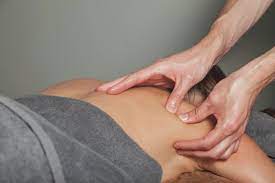
Introduction De Quervain syndrome, also known as de Quervain tenosynovitis, is a painful condition affecting the tendons on the thumb side of your wrist. While there are various treatment options available, including medications, splinting, and surgery, massage therapy has emerged as a popular and effective approach for managing the symptoms of de Quervain syndrome. In this article, we’ll delve into the specifics of de Quervain syndrome massage, exploring its benefits, techniques, and frequently asked questions.
H2: Understanding de quervain syndrome massage
What is De Quervain Syndrome Massage? De Quervain syndrome massage involves targeted manipulation of the affected tendons and surrounding muscles to alleviate pain, reduce de quervain syndrome massage inflammation, and improve range of motion in the wrist and thumb. This therapeutic approach aims to address the underlying issues contributing to the syndrome, such as tendon irritation and swelling.
Benefits of Massage Therapy for De Quervain Syndrome
- Pain Relief: Massage helps relieve muscular tension and discomfort associated with de Quervain syndrome, promoting relaxation and pain relief.
- Improved Circulation: By increasing blood flow to the affected area, massage therapy supports the delivery of essential nutrients and oxygen to the injured tissues, aiding in the healing process.
- Enhanced Mobility: Regular massage de quervain syndrome massage sessions can help restore flexibility and mobility in the wrist and thumb, facilitating smoother movement and reducing stiffness.
- Stress Reduction: Chronic pain and discomfort can take a toll on mental well-being. Massage therapy offers a calming and soothing experience, promoting relaxation and reducing stress levels.
H3: Effective Massage Techniques for De Quervain Syndrome
1. Myofascial Release: This technique involves applying gentle pressure to release tension in the connective tissue surrounding the affected tendons, promoting pain relief and improved mobility.
2. Deep Tissue Massage: Targeting deeper layers of muscle de quervain syndrome massage and tissue, deep tissue massage helps alleviate muscular knots and tension, addressing underlying issues contributing to de Quervain syndrome.
3. Trigger Point Therapy: By identifying and targeting specific trigger points associated with pain and discomfort, this technique helps reduce localized pain and restore normal function to the affected muscles and tendons.
FAQs about De Quervain Syndrome Massage
Q: How often should I undergo massage therapy for de Quervain syndrome? A: The frequency of massage sessions may vary depending on the severity of your symptoms and your individual response to treatment. It’s best to consult with a qualified massage therapist to determine an appropriate treatment plan tailored to your needs.
Q: Can I perform self-massage at home to alleviate symptoms of de Quervain syndrome? A: While self-massage techniques can provide temporary relief, it’s essential to seek guidance from a trained professional to ensure proper technique and avoid exacerbating the condition.
Q: Are there any precautions I should take before undergoing massage therapy for de Quervain syndrome? A: It’s crucial to inform your massage therapist about your medical history, including any underlying health conditions or previous injuries. Additionally, if you experience increased pain or discomfort during the massage, be sure to communicate with your therapist to adjust the pressure or technique accordingly.
Conclusion De Quervain syndrome massage offers a holistic approach to managing the symptoms of this debilitating condition, providing relief from pain and promoting de quervain syndrome massage healing and recovery. By incorporating effective massage techniques into your treatment regimen, you can take proactive steps towards restoring function and improving your quality of life. Consult with a qualified massage therapist to explore the best options for addressing your individual needs and experiencing the benefits of massage therapy for de Quervain syndrome.